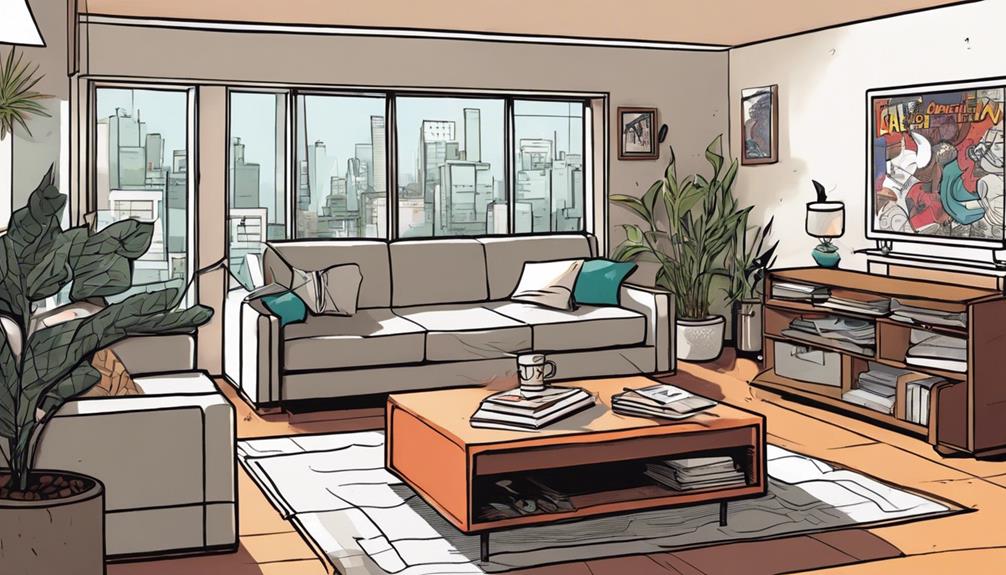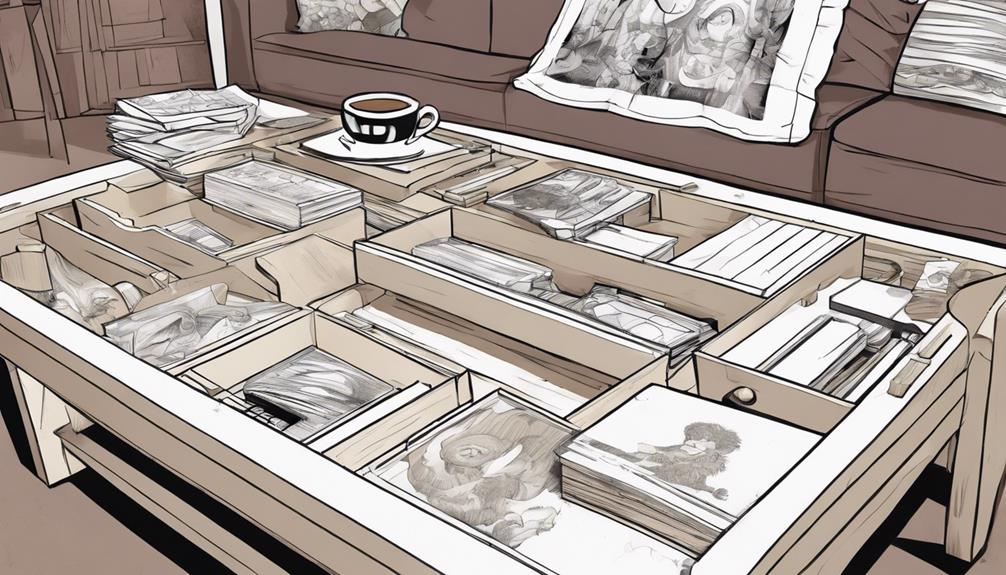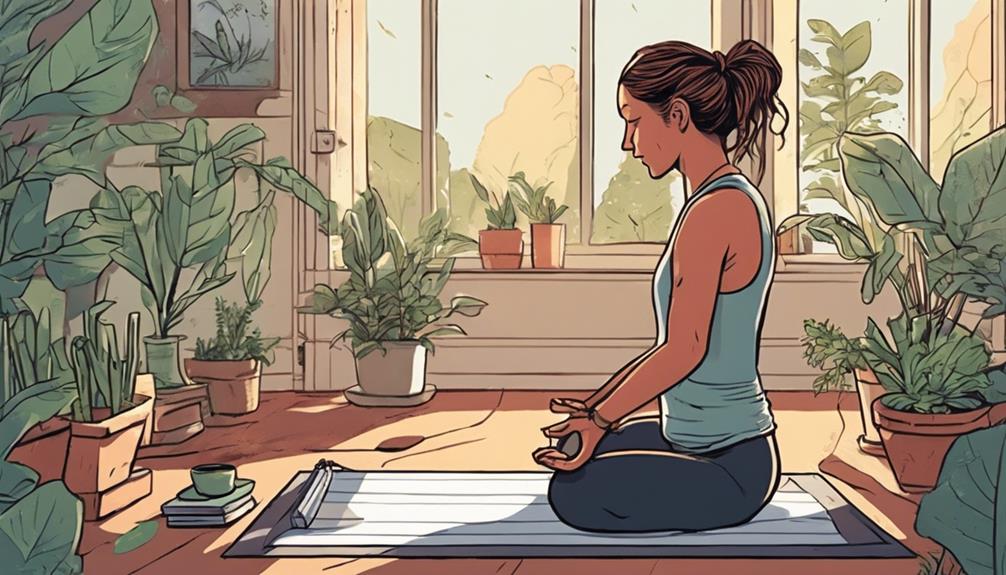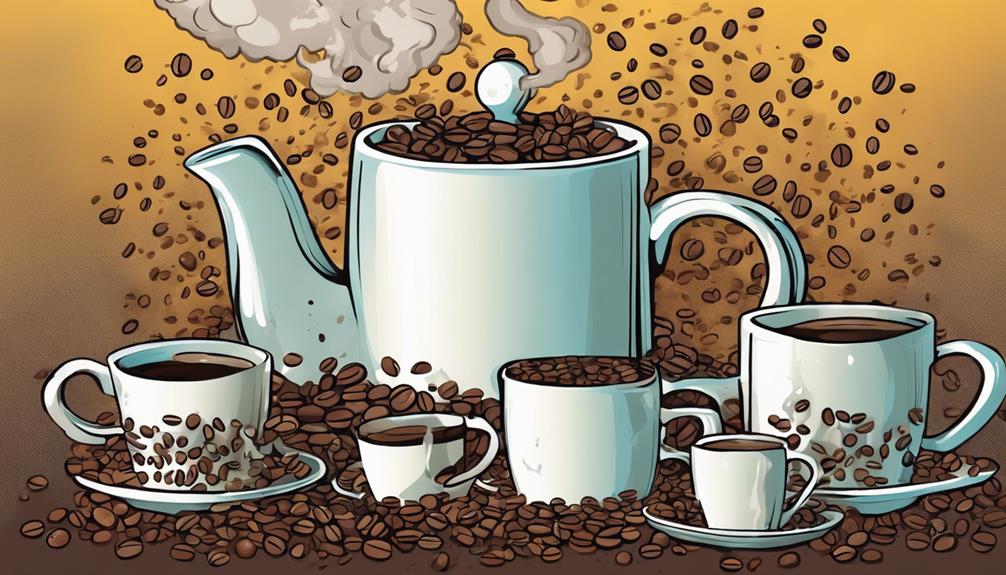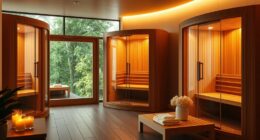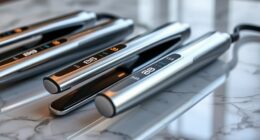Ready to tackle the challenge of building a secret stash coffee table with **sneaky compartments**? Begin by gathering materials and cutting them precisely to fit. Create sturdy joints using pocket holes and finish with a **rustic look** by painting and staining, sealing with water-based urethane for durability. Incorporate X-shaped braces with **strong connections**, ensuring the table’s stability. Secure the bottom firmly and add shelves for extra storage room. Amp up security with a **fingerprint lock**, and distress the wood for a more refined aesthetic. Fasten the end pieces with screws and test the lock for functionality before showing off your new DIY skills! If you’re up for a fun challenge, this project is perfect for you!
Key Takeaways
- Incorporate a hidden compartment in the coffee table design for discreet storage.
- Secure bottom board and shelf for easy access to the concealed storage area.
- Utilize biometric lock for added security and convenience in accessing hidden compartment.
- Follow precise assembly instructions including half lap joints and pocket holes for stability.
- Ensure smooth tabletop operation with properly installed slides for the hidden compartment.
Material Preparation and Initial Cuts
How do you maintain a square and professional look for your concealment coffee table during material preparation and initial cuts?
To achieve this, ensuring excellent customer service starts with removing the rounded edges of the two by four and two by six materials. By doing so, you lay the foundation for a seamless construction process.
The two by six material is then ripped to a width of five and eight inches, crafting the tabletop, while the two by four material is cut to three inches wide for specific components of the table.
Additionally, square stock material is also prepared for use in constructing the coffee table.
These initial cuts are critical in guaranteeing precise measurements and a polished finish for your project. By prioritizing accuracy and attention to detail in the early stages, you set the stage for a successful build and a satisfied customer.
Assembly and Finishing Techniques
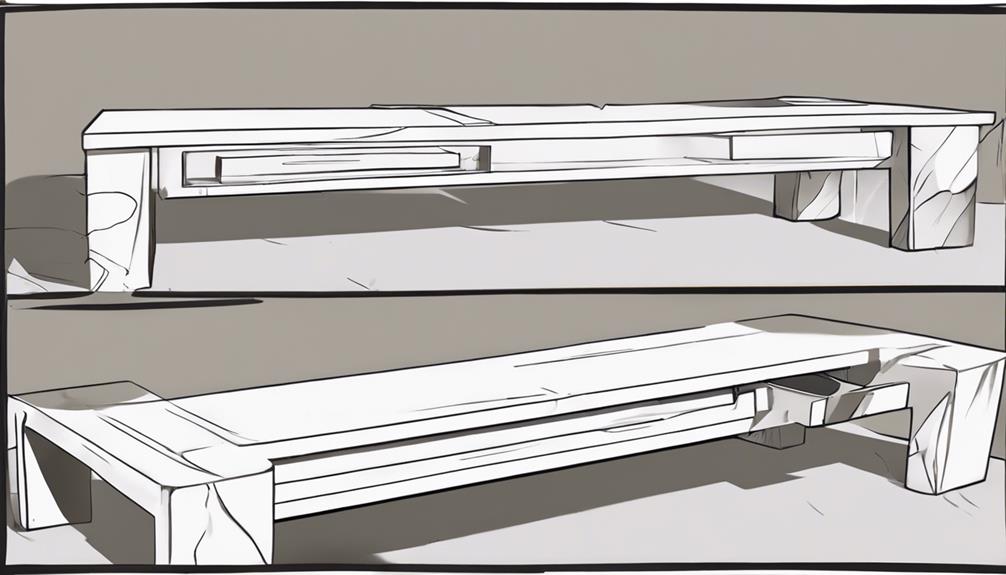
To guarantee a strong and visually attractive end product, use pocket holes for secure joinery when assembling the front and back sections of the X-Frame farmhouse concealment coffee table.
Before staining, apply black spray paint to parts of the table for a weathered look. Once the paint dries, stain the tabletop with Minwax's early American stain.
For a long-lasting finish, coat the tabletop with a water-based urethane to protect against daily wear and tear.
When installing the X braces, incorporate half lap joints and glue for added stability and structural integrity. To make sure everything functions seamlessly, test all components before finalizing the assembly.
Finally, when installing the bottom board and bottom shelf of the concealment coffee table, make sure to secure them properly for easy access and maintenance.
Following these assembly and finishing techniques will result in a beautifully crafted concealment coffee table that meets both aesthetic and functional requirements.
Installation Techniques
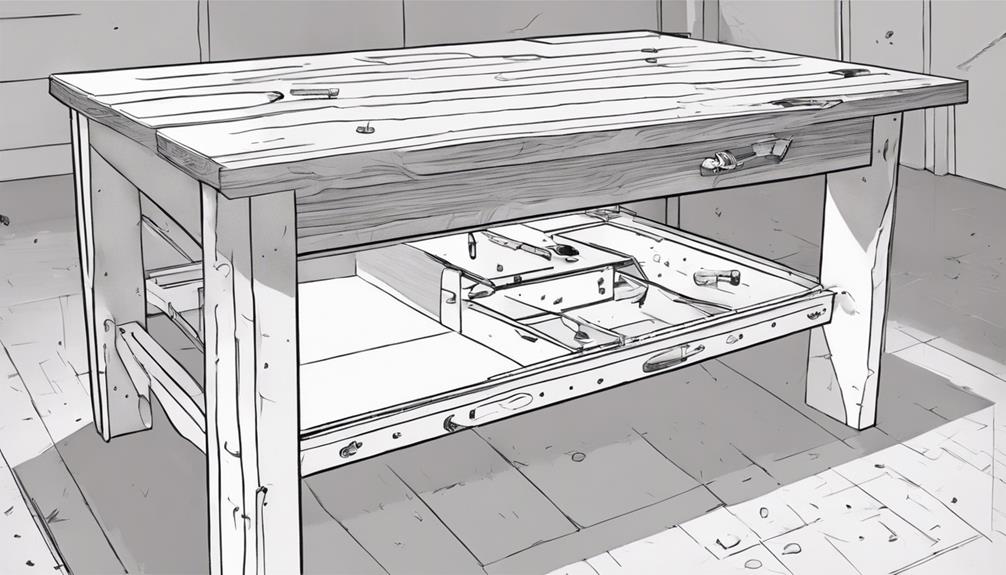
Securely installing the bottom board is necessary to create a functional hidden compartment within the concealment coffee table. When securing the bottom board, you need to make sure it's firmly attached to provide a stable base for the hidden compartment.
To enhance the table's stability and visual appeal, use half lap joints and glue to install the X braces. This method not only reinforces the structure but also adds a touch of elegance to the design.
Proper installation of slides is vital to prevent friction and guarantee the smooth operation of the tabletop when accessing the hidden compartment. Additionally, incorporating a bottom shelf can offer extra storage space, maximizing the functionality of the concealment coffee table.
For added security and convenience, consider installing a biometric lock to safeguard the hidden compartment while allowing easy access. By following these installation techniques carefully, you can create a concealment coffee table that's both practical and stylish.
Final Assembly and Additional Features
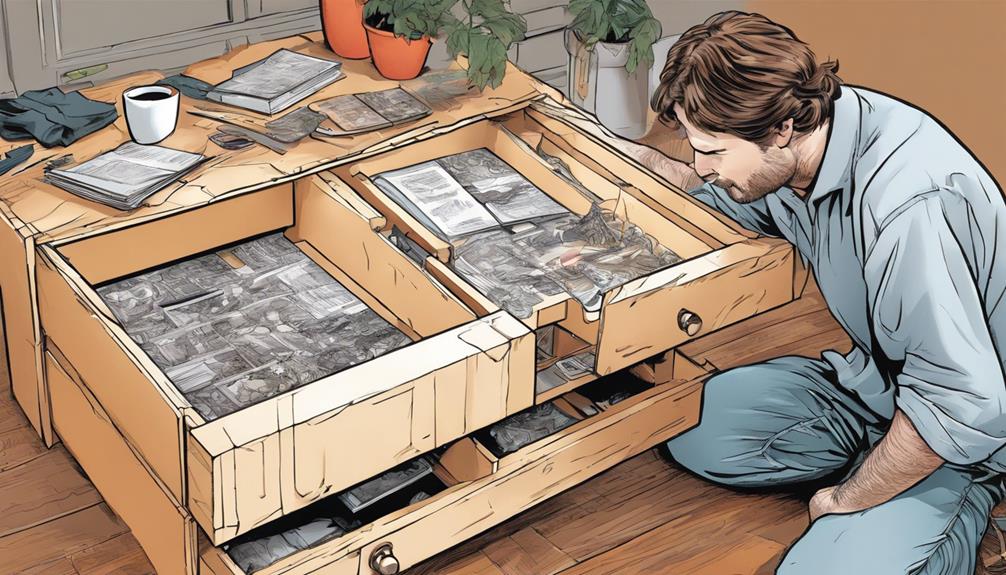
Apply distressing techniques to the painted parts for a weathered appearance before proceeding with the final assembly and incorporation of additional features. Once the distressing is complete, sand the surfaces for a polished finish before moving on to staining the tabletop. Securely install the end boards using screws to ensure stability, and then position the bottom cleat and slide supports to provide adequate support for the tabletop. Test the lock functionality to guarantee proper operation and security for your concealed storage space.
To keep your project within budget and save money, consider repurposing materials or using cost-effective alternatives. Here's a simple cost-saving idea to help you along the way:
| Cost-Saving Idea | Description |
|---|---|
| Upcycle Old Drawer | Repurpose an old drawer as a secret compartment to save money on material costs. |
Building X-Frame Farmhouse Table
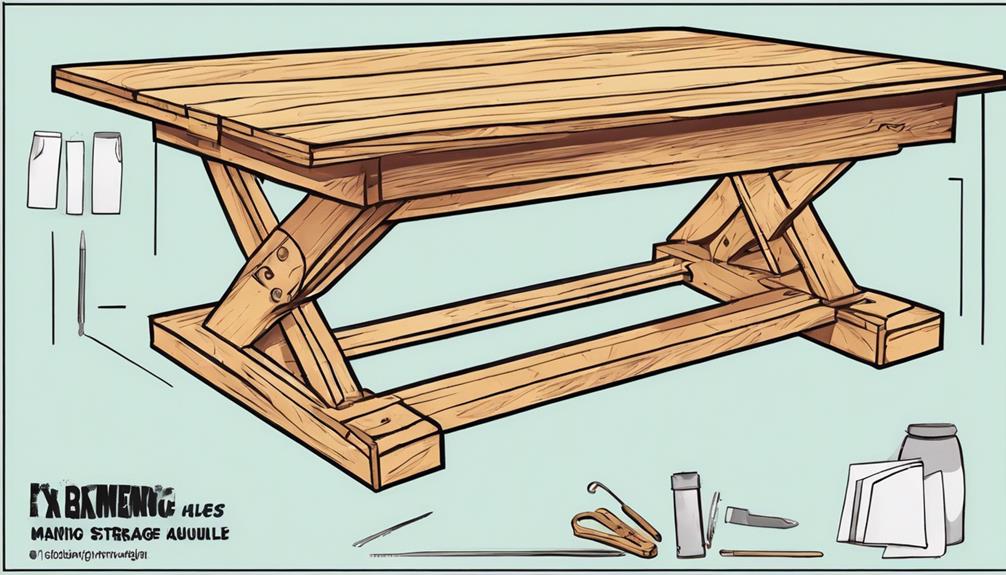
Before starting the construction of the X-Frame Farmhouse Table, make sure you have all the necessary materials and tools ready for the project.
Let's talk about how to build this unique piece. Begin by preparing two by fours and two by sixes, ensuring the rounded edges are removed for a square look. Utilize pocket hole joinery for assembly, creating a sturdy frame for the table.
The video tutorial provides detailed instructions on constructing a regular coffee table with a farmhouse design, offering a twist on traditional style. Remember to refer to the cut list and plans available to guide you through the construction process effectively.
After assembly, consider adding distressing effects with black spray paint, staining the tabletop for a rustic touch, and applying a water-based urethane finish for protection.
Frequently Asked Questions
How to Build a Storage Ottoman Coffee Table?
To build a storage ottoman coffee table, cut plywood to size, attach foam padding and fabric, leaving one side open. Add a hinge for easy access to the storage compartment. Place it on a coffee table base for a functional piece.
How Do You Make a Suitcase Into a Coffee Table?
Turn that old suitcase into a coffee table oasis! Create a flat surface by removing hardware, add legs for stability, top it off with glass for a sleek finish. Customize with paint to match your style.
How to Make a Large Footstool Coffee Table?
To make a large footstool coffee table, secure the footstool to a sturdy base, then add a wood or glass tabletop. Customize it to match your style and incorporate hidden storage for a practical touch.
How Do I Keep My Coffee Table Clutter Free?
To keep your coffee table clutter-free, utilize hidden storage for remote controls and magazines. Incorporate removable trays to organize small items. Designate spots for coasters. Use trays for keys and pens. Regularly declutter to maintain a tidy living space.
Conclusion
Now that you've learned how to build a concealment coffee table, you may be thinking it sounds too complicated.
But don't worry! With the right materials and a little patience, you can easily create a stylish and functional piece of furniture that adds extra storage to your space.
So give it a try and impress your friends with your DIY skills!
